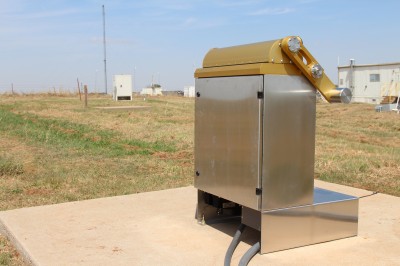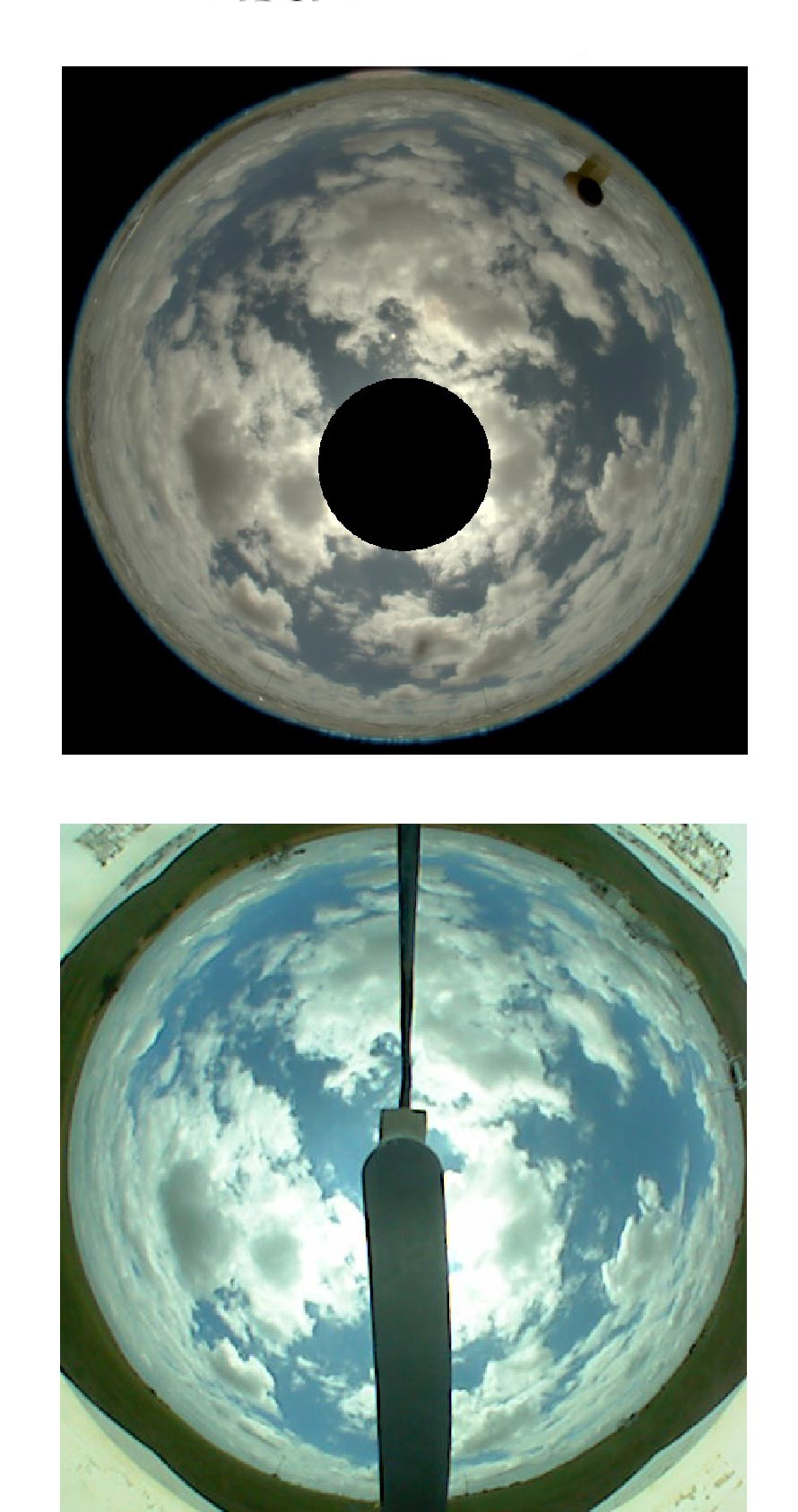Studying the Sky—Day and Night
Published: 8 July 2014

In May, a new instrument called Infrared Sky Imager (IRSI) began operating at the SGP site to fill a critical data gap for measurements of nighttime cloud fraction. Featuring both an infrared and a visible camera, the IRSI captures images of the sky with a 180° field-of-view, day and night. The images are then processed to produce fractional sky cover amounts. Data from this instrument will benefit cloud and climate modelers through giving access to a previously missing gap of nighttime cloud fraction.

Traditionally, meteorologists at weather observing sites, would walk outside, look up, and determine how many eighths of the sky was covered by clouds. An instrument called a Total Sky Imager (TSI) was developed to replace the human observer and to increase the number of cloud fraction observations that could be taken per day.
The TSI takes an image of the sky every 30 seconds, from dawn to dusk, to record how clouds evolve over time. These images are edited together to create a video that shows the complete evolution of clouds during the day. The TSI has operated at the SGP site since 1999.
Filling the Gap
Unfortunately, neither the TSI, nor any other instrument at the SGP site, could effectively measure cloud fraction at night. The TSI’s low-light cameras can allow images to be taken shortly after sunset, but not clearly enough to continue through the night. The measurement of nighttime sky cover has been a long-standing gap in its observational data set.
The IRSI originally operated at the SGP site for Intercomparison Studies in 2007 and 2009 with a variety of other instruments that measure cloud fraction. The studies resulted in data to determine which instruments produced the best results. One instrument stood out in both campaigns due to the quality of data produced and the technical improvements by the manufacturer. The IRSI was finally purchased and installed in May 2014 and is now a permanent part of the SGP optical cluster.
The ARM Climate Research Facility is a DOE Office of Science user facility. The ARM Facility is operated by nine DOE national laboratories, including .
Keep up with the Atmospheric Observer
Updates on ARM news, events, and opportunities delivered to your inbox
ARM User Profile
ARM welcomes users from all institutions and nations. A free ARM user account is needed to access ARM data.


















